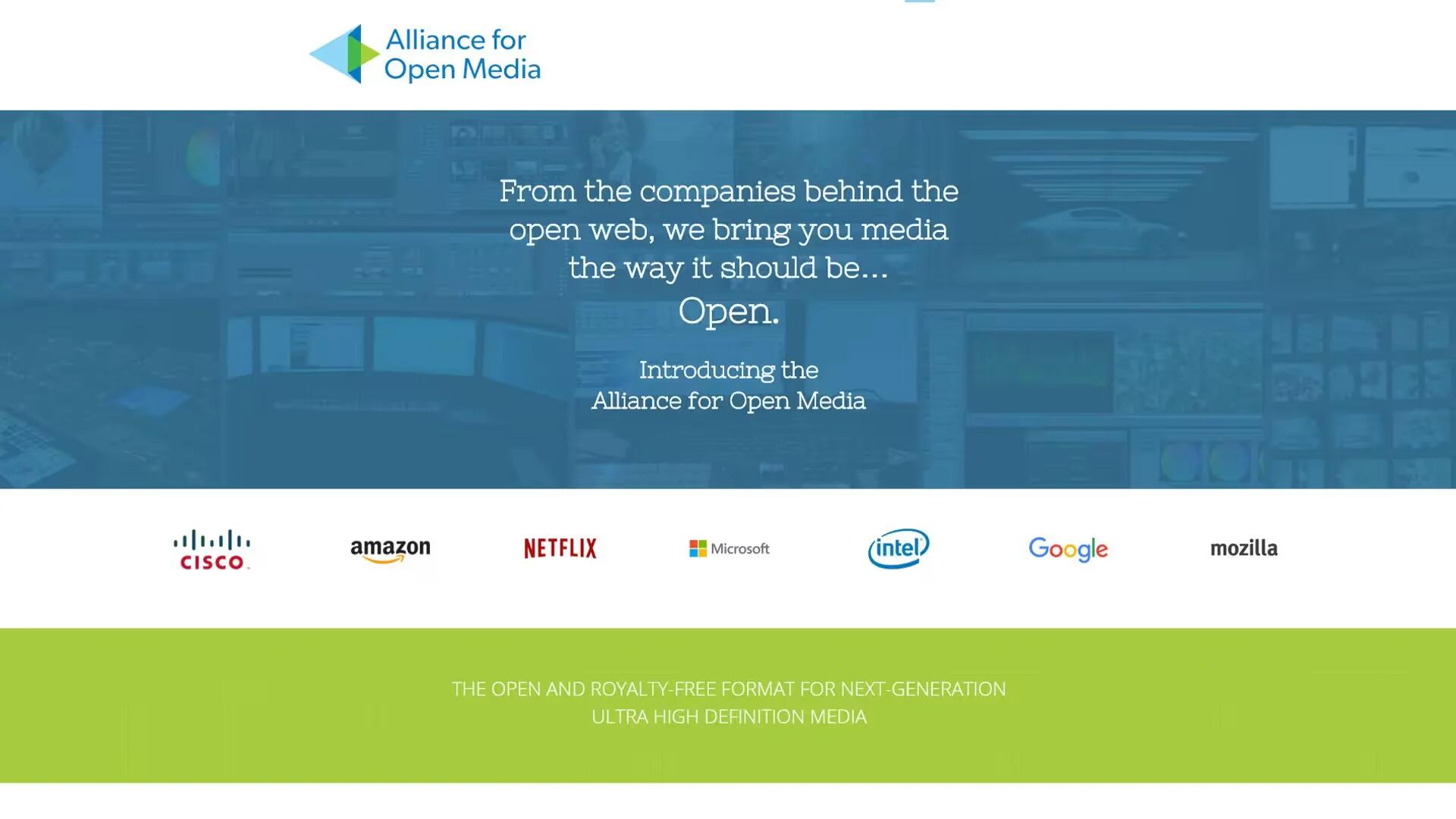Today, Amazon, Cisco, Google, Intel, Microsoft, Mozilla and Netflix all teamed up to announce the “Alliance For Open Media” with the goal of developing the next generation of royalty-free video formats, codecs and other related technologies.
It is no secret that many tech companies hate video formats that are closed, cost money or both. They hate it enough so that they will drop popular standards and develop their own codecs. However, what we do not often see was the rival companies come together to build a new technology together. The members of “Alliance for Open Media” argue that this kind of alliance is necessary to create a new interoperable video standard that will work across vendors and platforms.
Customer expectations for media delivery continue to grow, and fulfilling their expectations requires the concerted energy of the entire ecosystem,
The Alliance for Open Media brings together the leading experts in the entire video stack to work together in pursuit of open, royalty-free and interoperable solutions for the next generation of video delivery.
The main goal of this alliance is to create a future video format that should be royalty-free, open to anyone and playable on just about any modern device. As Mozilla notes, part of the reason for forming this alliance is not just to share technology, but also to “run the kind of patent analysis necessary to build a next-generation royalty-free video codec”.
There are lot of royalty-free next-gen codec projects including but not limited to Mozilla’s Daala, Cisco’s Thor, and Google’s VP9 and VP10. It is no surprise then that the Alliance’s first project is to create a new video codec specification that is based on the previous work of its members.
The alliance want to create a format that is open and interoperable, as well as optimized for the web and scalable to any device and bandwidth. The format is also meant to support real-time video delivery and usable for commercial and non-commercial content. To use the format to commercial purpose, the new video has to offer support for content encryption, something Amazon, Netflix and others have to support in order to be able to get the licensing rights for most of their content.
The Alliance’s initial focus is to deliver a next-generation video format that is:
- Interoperable and open;
- Optimized for the web;
- Scalable to any modern device at any bandwidth;
- Designed with a low computational footprint and optimized for hardware;
- Capable of consistent, highest-quality, real-time video delivery; and
- Flexible for both commercial and non-commercial content, including user-generated content.
While it is not stated, the Alliance is effectively trying to make an end run around MPEG LA, the group that licenses big video formats like H.264 and H.265. If the Alliance can create a standard that catches on, it would eliminate one of the common costs for offering video playback on devices and through the internet.
It is also to be noted, Apple is not one of the founders. Unless the Alliance can convince Apple to hop aboard, it may have trouble reaching the widest possible audience. Considering everything is still very early and the Alliance has not even revealed how others can join, we can hope to hear more companies joining in the coming months.
The Alliance plans to publish its code under the Apache 2.0 license and it will operate under W3C patent rules, meaning the members will waive royalties from the codec implementations and their patents on the codec itself.
Source:Â Alliance For Open Media
